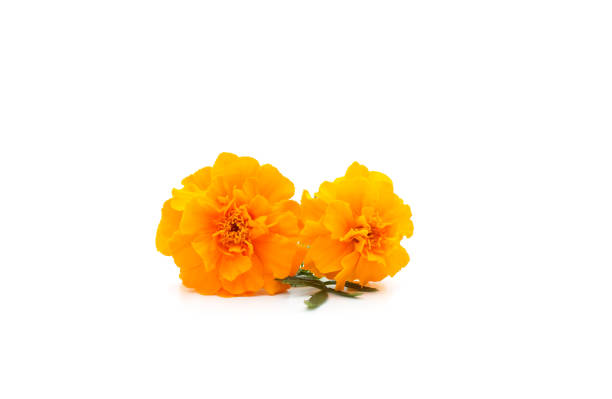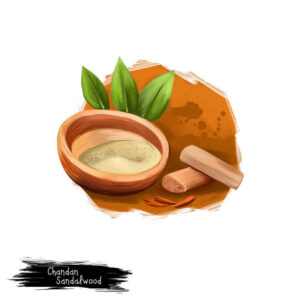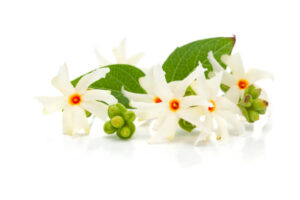There are some scents that never leave you, no matter how many years pass. The marigold, or genda phool as we call it in India, is one of those scents for me. It is a fragrance that has been a part of my life for as long as I can remember, woven into the very fabric of my childhood and my culture. The marigold’s deep orange and golden blooms, with their sweet and slightly earthy aroma, are intertwined with my earliest memories of Diwali, the festival of lights.
I must have been around 10 or 11 years old when I first started making torans—the traditional floral garlands and decorations that are hung on doorways to invite prosperity and happiness into the home during Diwali. The process of making these garlands was nothing short of magical. Every year, me and my mother would visit the local flower market early in the morning, to pick the freshest marigolds. The market was always a burst of color and life: vendors haggling over the price of blooms, the air thick with the mixed aromas of fresh fruits, spices, and flowers. But above all, it was the marigold’s scent that would overwhelm my senses. The flowers were always stacked high in large heaps—some bright yellow, others deep orange—and their fragrance, so warm and inviting, seemed to carry the spirit of Diwali itself.
As I picked through the flowers, I remember the joy I felt at the task ahead. Each year, my mother would give me the responsibility of stringing the marigolds into long chains to decorate the house. The process was simple, but it always felt like a form of worship. I would sit in the cool shade of our verandha, a small basket of marigolds at my side, and carefully thread them one by one onto a thin cotton string. The petals, soft to the touch, would yield a burst of fragrance each time I pulled them apart, releasing their sweet, slightly tangy scent into the air. It was a scent that felt like home, warm and familiar, and it carried with it the promise of joy, togetherness, and new beginnings.
What I didn’t realize then was how much those marigolds—and their scent—were shaping me. I had no idea that this simple, fragrant flower, this humble adornment for our doorway, would plant the seed of my future. The more I worked with the marigolds, the more I became aware of the power of scent—the way it could uplift, transform, and create an atmosphere. It wasn’t just a flower for me; it was an experience. The marigold’s scent would fill the house, lingering in every corner as we prepared for the festival. It was the fragrance of Diwali itself—of light and hope and new beginnings.
I loved watching my brother hang the torans across the doorframes, the vibrant marigold garlands swaying gently in the breeze. They made everything feel festive, like we were welcoming the divine into our home. The scent of the marigold would blend with the other aromas of Diwali—freshly made sweets, the smoky fragrance of incense, and the earthy smell of the clay diyas—and create a tapestry of smells that marked the beginning of our celebrations. As we lit the diyas and set off fireworks, the marigold’s scent would remain, grounding the joyous chaos of the day with its sweetness.
As I grew older, my love for fragrance only deepened. I became curious about how certain scents could evoke such strong emotions, how the right blend of notes could transport you to a different time, a different place. The marigold, in particular, stuck with me. It wasn’t just a childhood memory; it became my muse. I didn’t know it then, but the marigold would play a pivotal role in my future—my journey into the world of perfumery.
When I decided to pursue a career in perfume evaluation, it was the marigold that I kept coming back to. I studied how its notes of sweet, honey-like warmth could be balanced with the sharp, almost citrus-like undertones. I began to evaluate marigold profiles in my fragrance library, trying to capture the very essence of what it meant to me. It wasn’t just about the flower’s fragrance—it was about the memories and feelings it held. The warmth of my mother’s hands as she arranged the torans, the laughter of family gathered together, the feeling of excitement as the festival unfolded around us. All of this was bottled up in the marigold’s scent for me, a scent that held within it the joy of a thousand Diwalis.
Today, as a perfumer, I look at the marigold not just as a flower, but as an anchor to my roots, a reminder of the childhood that shaped me. The marigold’s fragrance continues to influence the way I create, how I think about scent and memory. In many ways, I feel as though I am still making those torans, weaving together different notes, crafting something that will evoke the same sense of warmth, happiness, and nostalgia that I felt as a child.
The marigold taught me that scent is more than just a smell; it is an experience, a story, a memory. And for me, it is a story that began in my childhood, in the fragrant swirls of marigold petals that marked the celebration of life’s simplest joys.





